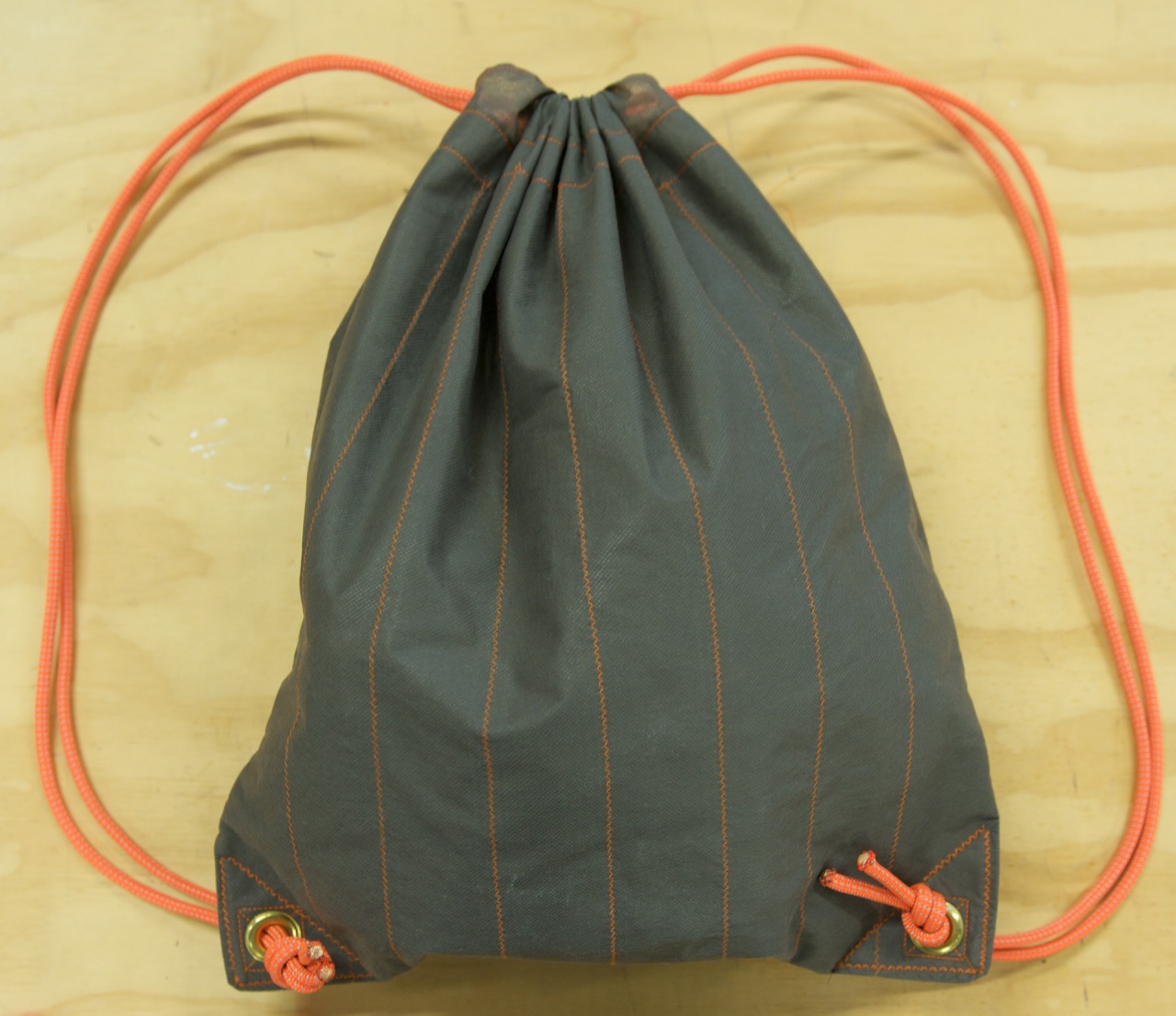
This drawstring bag is the perfect way to carry around your stuff! You can throw it over your shoulder or wear it as a backpack. I loosely based this project on another drawstring bag I had; it broke because the stitching was weak, so I made this version more durable. Also, I used much thicker rope for the drawstrings than I’ve seen on most other bags. This is an aesthetic decision that can be changed according to your taste.
I designed the main pouch to hold my climbing gear and added some pockets inside to hold my wallet, keys, and phone. However, if these storage options don’t fit your needs, please feel free to alter the design. You can really add as many pockets inside as you want and you could also try putting pockets on the outside too.
Since this is going to hold my climbing gear, I wanted to use outdoorsy colors, so I chose the grey and burnt-orange color scheme, but you can pick any colors or patterns you like to fully customize your drawstring bag!

This project is fairly easy if you already have some sewing skills. If you’ve never used a sewing machine before then you may want to try a more basic project first. You’ll also want to set aside 4-6 hours to complete it. You’ll need the supplies and materials listed in the sidebar on the right, and plenty of table space to spread out.
The fabric I used was a bit thin and delicate, so I doubled it up and reinforced it with stitching. If your fabric is durable enough with just one layer, then feel free to skip this reinforcing step. However, I think it looks pretty cool too, so you may want to add the stitching just for aesthetics.



